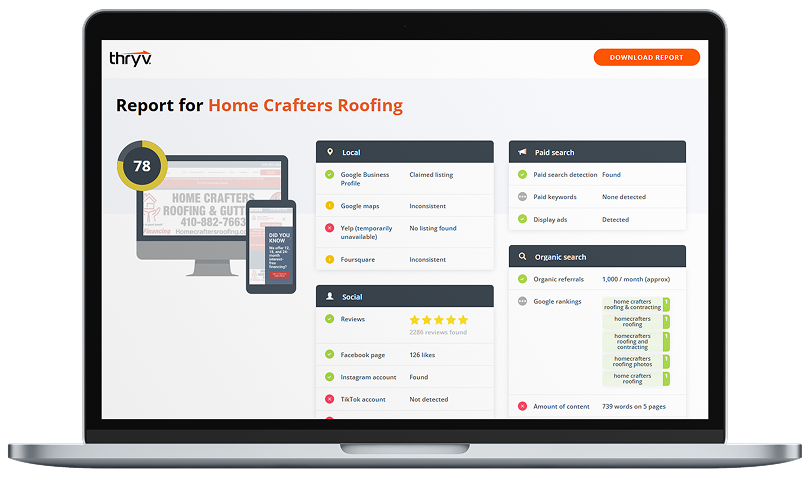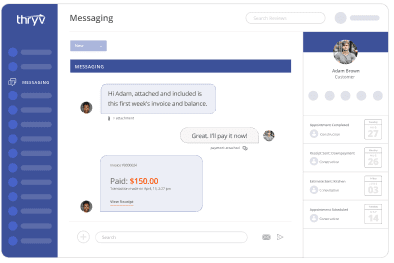One of the best ways to tell if a business owner has a handle on the difference between macro and micro marketing is their answer to this age-old question:
Who is your target audience?
Those business owners who answer, “Everyone!” are likely the ones struggling. Why?
Successful marketing campaigns are, most typically, ones that speak to a specific group of people and can entice that group of individuals to take action. We call this micro marketing.

Small business marketing software made easy.
Learn MoreMacro Marketing vs Micro Marketing
What’s the difference between micro marketing and macro marketing?
- Micro Marketing – When brands target their advertising and promotions to a small, specific audience to maximize their marketing resources
- Macro Marketing – How brands address a larger audience, including considerations like consumer behavior and global ad spending
Macro marketing has its place in the marketing ecosystem – we don’t dispute that. That’s why multi-million dollar brands continue to throw cash at things like television ads and celebrity influencers. Because sometimes, these investments contribute positively to their brand awareness and affinity.
But when you’re operating a local business with a more “micro” budget, investing in TV ads and social media influencers may not be a feasible option.
That’s where micro marketing comes in. Though it may seem like more work to target smaller segments, the rewards can be huge.
4 Smart Micro Marketing Tactics for Small Businesses
1. Own your niche.
Have you taken a look at the competition lately? Many local businesses operate in highly competitive spaces. Chances are if you run a local business, you’re competing for customers within a specific geographic area every single day. And you’re not the only business doing it.
How do you stand out? If you’re successful, it’s probably because you’ve found a niche within your product or service category that helps you get chosen over the local competition. So do your best to own that niche!
If you want to own your niche, you first need to identify it. Think about what makes you different, and jot down a few terms that convey that. Incorporate these terms into the marketing tools that get you found online, like online business listings, your website, your social media business pages and any advertising you do.
If you can describe your niche in a clear and consistent way across the web, it’ll help you show up more often when consumers search for your specific offering.
2. Run hyper-targeted Google AdWords campaigns.
Do you use Google AdWords yet? Google AdWords is one of the most popular display advertising tools out there. It’s also a great way to gauge how your marketing messages and promotions are being received by your target consumers. With a small investment, you gain access to in-depth insights on how well your ads are (or aren’t) working. Then, you can use these insights to adjust your messaging.
Need a refresher on how Google AdWords works? There’s a bidding/auction system in which you bid on your preferred price-per-click. Once you set up a campaign, you can choose your geographic location and come up with some keyword-savvy copy, Google uses these variables along with your bid to rank your ad among others for relevancy.
Pro tip: Remember, “near me” searches are way, way up, so hyperlocal, “close by”, “nearby” and “around me” searches will only continue to rise. When writing copy for your ads, make your location very clear and specific. Instead of incorporating a state name or a big city name, incorporate into your copy a few names of surrounding suburbs you want to target.
3. Super-segment your social ads.
One of the most beneficial aspects of social media advertising is social media networks’ ability to segment your audience. When compared to more traditional forms of marketing, ads on channels like Facebook and Instagram can be heavily filtered to suit your ideal customer.
Common filters include:
- Age
- Gender
- Relationship status
- Education
- Career details
- Geographic location
- Interests and hobbies
- Device used
You can set these filters when you set up a campaign, along with other factors like budget and timeline. When it comes to micro marketing, it’s all about being as specific as possible!
4. Beat the big guys with even bigger customer service.
Evaluate how your company acts when you come into contact with a new lead, prospect, customer or returning customer. This is a big part of your brand, and for many of the big guys, their customer service policies make up a macro marketing strategy.
That’s where you can differentiate your business. When the big guys are looking at customer service on a macro level, you can take it to a micro level. It’s not a bad idea to have a general customer service strategy or policies. But as a small business owner, you’re uniquely positioned to provide individualized support and make a greater impact with personalized, one-on-one customer service. Empower your team members to make creative, more out-of-the-box decisions that make a difference, and lasting customer loyalty will follow.
Here’s more on beating the big guys at their own game, and how to use customer service best practices.

Modern Small
Business Playbook
Find expert tips and tools to help you streamline communications, automate your marketing efforts, improve your business operations, and more in this free guide.


